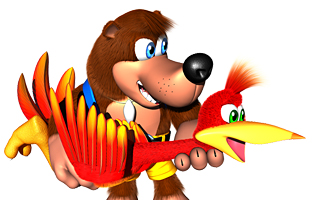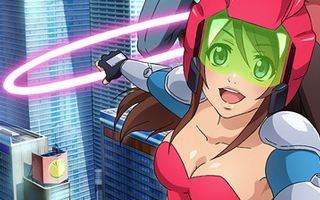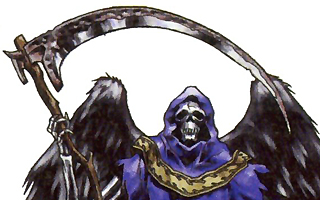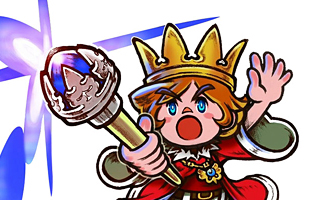Land of the Rising Sun
Top 10 Best Japanese Video Game Characters!
I love Japanese culture. The island nation has given the world manga, anime, samurai movies, sushi, ramen, karaoke, emojis, sudoku, the Walkman, camera phones, laptops, bullet trains, capsule toys, karate, optical media, microprocessors, lean manufacturing, Hello Kitty, Mr. Miyagi, and some really weird porn. I’m especially interested in their contributions to the video game industry, however. Many of the biggest and most influential video game companies are based in Japan, so it’s not surprising that many characters hail from the Land of the Rising Sun. Countless character archetypes stem from Japanese pop culture, and many of them will be highlighted on this list.
Examples: Sailor Moon, Samurai Jack, Kiki

10
Pocky
Pocky & Rocky Series
KiKi KaiKai was marketed as an alternative to contemporary action games like Commando, and its “exotic Asian atmosphere” was one of the main selling points. The game saw a limited release outside of Japan, but the sequel was released around the world as Pocky & Rocky. Pocky (also known as Sayo-chan) was a young shrine maiden living in Feudal Japan. When the Seven Lucky Gods were captured by a band of mischievous goblins, she bravely set forth to rescue them. Armed with special o-fuda scrolls and a purification rod, Pocky confronted numerous creatures from Japanese mythology – including yokoi, kappa, and the ancient serpent Orochi. When the sequel hit many years later, Pocky was accompanied by a magical tanuki named Rocky. A shrine maiden and a tanuki… It simply doesn’t get more Japanese than that.

9
Kokoro
Dead or Alive Series
Nearly half of the Dead or Alive gals are from Japan, but it was easy to single one of them out for this list. Kasumi is arguably the most well-known character from the series and Ayane looks the most like an anime waifu, but nobody embraces their culture as much as Kokoro. She was training to be a geisha in her youth, but she was also interested in pursuing martial arts. That’s a distinctive Japanese problem if ever there was one. Although her mother reluctantly allowed her to enter the Dead or Alive fighting tournament, Kokoro resumed her geisha training after she returned home. If nothing else, Kokoro deserves tremendous credit for being proficient in two different disciplines. She looks graceful when she’s fan dancing or playing the shamisen, but a different kind of elegance is required when you’re kicking someone in the face.

8
Makoto Niijima
Persona 5
The Persona games are set in modern-day Japan, and they focus on contemporary characters and themes. Any number of characters from the series could have been mentioned here, but Makoto Niijima is a great fit for this list. Japanese people are stereotyped as being hard-working, and this is certainly true of Makoto. She’s something of a perfectionist, and she has an inflated sense of responsibility. Even though she’s an honor student and president of the student council, Makoto suffers from an inferiority complex and sometimes acts in a reckless manner in order to prove how dependable she is. Despite her efforts to act mature, she has a humorous side hidden behind her serious exterior. As a member of the Phantom Thieves, Makoto aims to steal the hearts from corrupted adults. She certainly stole my heart.

7
Mitsurugi
SoulCalibur Series
No list of Japanese characters would be complete without a typical samurai. Heishiro Mitsurugi could more accurately be described as a ronin, but he still fits the bill. Mitsurugi looks like he was lifted straight from an Akira Kurosawa film, and he was apparently inspired by real-life swordsman, Miyamoto Musashi. The wandering warrior was the focal point of Soul Edge, and he’s the only character who has been playable in every game in the series thus far. The son of a farmer in a homeland ravaged by war, Mitsurugi took up the sword after his parents were killed. He fought as a hired mercenary in many battles and soon earned a reputation as a great warrior. He could reportedly mow down foes like fields of wheat, but he sought a worthy opponent and spent years drifting around the countryside to prove his greatness.

6
Athena Asamiya
The King of Fighters Series
Magical girls are a staple of anime and manga, but Athena Asamiya was one of the first characters to represent the sub-genre in the gaming world. Long before she became a mainstay in The King of Fighters, Athena made her mark in Psycho Soldier. She looked like a typical Japanese schoolgirl with her sailor-style uniform, but she was blessed with special psychic abilities that allowed her to defend her country from monsters. Although she mostly used her hidden powers to help others, she also planned on integrating them into her pop idol career. A lot of modern video games focus on magical girls and embrace idol culture, but these concepts were rarely explored in before Psycho Soldier was released. In an era where companies were starting to focus on American consumers, Athena was unapologetically girly and uniquely Japanese.

5
Strider Hiryu
Strider Series
As an elite member of a futuristic, high-tech ninja group, Strider Hiryu specializes in espionage, sabotage, and assassinations. His flashy moves and distinctive fashion helped make him one of Capcom’s most iconic figures. Any conversation about Japanese characters will inevitably involve ninjas. They could have easily comprised the entirety of this list. There’s a reason why I’m recognizing Hiryu over his contemporaries, however. Joe Musashi was raised in New York and the original Ninja Gaiden was set in America, but Strider Hiryu looked like he was ripped from the pages of a manga. In fact, the Strider series was conceived as a collaboration between Capcom and manga collective, Moto Kikaku. Hiryu is as much a manga character as he is a video game character, and he fully embraces Japanese pop culture tropes.

4
Goemon
Ganbare Goemon Series
Konami’s Goemon is loosely based on a Japanese folk hero named Ishikawa Goemon, and the Goemon games take place in a universe where all folklore and legend about Japan is true. The defining trait of the series has always been its bizarre sense of humor. It’s not easy to translate humor, however, so most of the Goemon games have been confined to the Japanese market. Konami apparently believes that Goemon is “too Japanese” for the rest of the world to understand or appreciate, and they’re probably right. The series is home to time-traveling transvestite nuns and giant robots that have no place in Japan’s Edo period, and Goemon himself is every bit as outlandish as the world around him. What more can you say about a hot-blooded thief who wallops foes with giant smoking pipes and killer yo-yos?

3
Nakoruru
Samurai Shodown Series
The Ainu are formally recognized in Japan as an indigenous group with their own distinct culture. Their society was built around hunter-gather philosophies and their religion was based on natural phenomena, so they are often perceived as having close ties to nature. Nakoruru is an Ainu shrine maiden, so it makes sense for her to be depicted as a defender of Mother Nature. She enjoys spending time amongst the trees, and she can apparently communicate with nature itself. This ultimately allows her to channel ki energy into her blade, and she can even heal wounds! Although Nakoruru has disdain for villains that pollute, she seeks out non-violent solutions whenever possible. If no other options present themselves, however, she can bust out her dancing sword arts or call one of her animal friends into battle.

2
Ryu
Street Fighter Series
We are all defined by our differences in one way or another, and this is certainly true of Ken and Ryu. The martial arts masters trained together, they use the same fighting moves, and they dress in the same fashion. Their personalities could not be more different, however. Ken is flamboyant, outgoing, and somewhat egotistical. In contrast, Ryu is a stoic figure who prefers to keep to himself. While Ken lives in America with his beautiful wife, Ryu is only interested in training. Both fighters understand the importance of hard work and discipline, but Ryu shows a level of dedication seldom seen outside of Japanese salaryman culture. Even though he’s fiercely independent, he’s a prisoner to his own tenacity. Ken’s life plays out like a cheesy romantic comedy at times, while Ryu’s journey is one of self-improvement.

1
Ryo Hazuki
Shenmue Series
Shenmue was a revolutionary, genre-busting game that captured how the city of Yokosuka looked like in the 1980s. The crowded streets of Dobuita were alive with shops and apartment complexes, and everything from the architecture to the weather system made you feel like you were being transported to another place and time. A strong emphasis was placed on social aspects, and the characters had daily schedules to adhere to. These characters were a reflection of the era, and this was especially true of Ryo Hazuki. Ryo was a skilled martial artist, he had a dojo in his house, and he spent his free time playing Sega games at the local arcade. The impulsive teenager represented a changing culture, and his generation was more interested with their independence than they were with carrying on the family legacy.





Do you agree with this list? Let us know what you think by leaving a comment below. Your opinion matters!